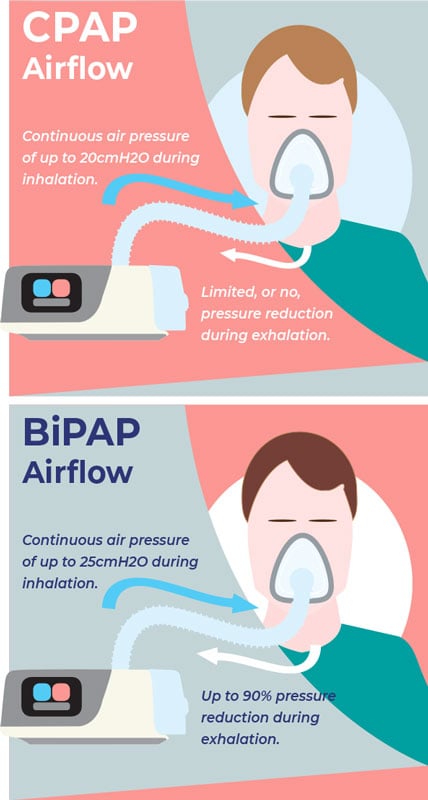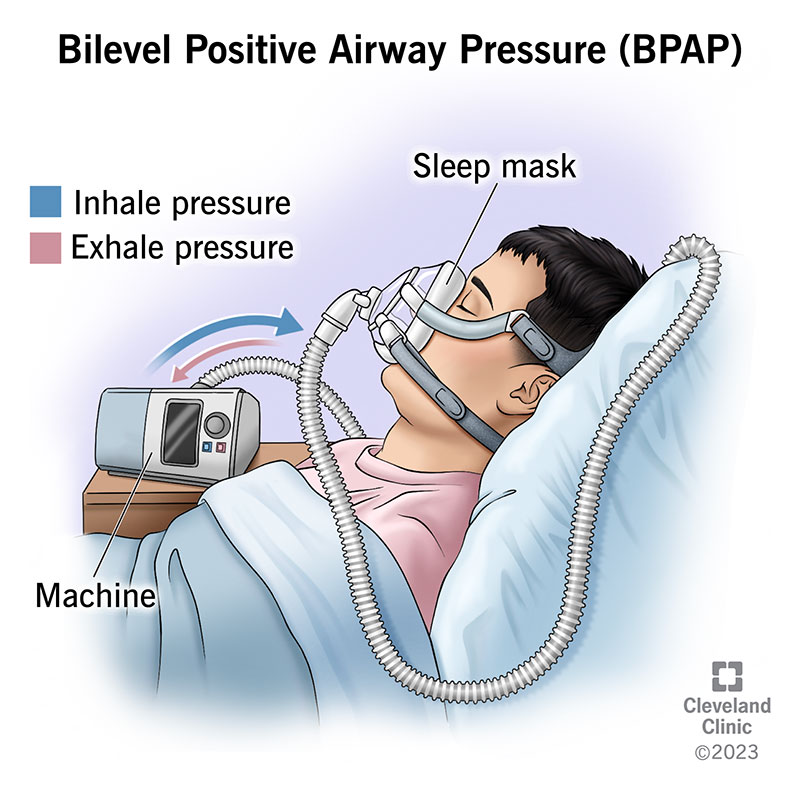Bipap vs. CPAP: Which Is the very best for Your Rest Disorder?
When browsing the intricacies of sleep disorders, the selection between BiPAP and CPAP treatment is an important consideration. While CPAP provides a consistent airflow ideal for obstructive sleep apnea, BiPAP's twin pressure setups may boost comfort for those with even more complex respiratory issues.
Recognizing Sleep Disorders
Sleep problems incorporate a series of conditions that interrupt normal rest patterns, impacting both the quality and duration of rest. These conditions can manifest in numerous kinds, consisting of sleep problems, rest apnea, narcolepsy, troubled leg disorder, and parasomnias. Each condition offers special difficulties, typically resulting in significant daytime tiredness, cognitive problems, and psychological disturbances.
Sleep problems is identified by difficulty dropping or remaining asleep, while rest apnea involves repeated interruptions in breathing throughout sleep, frequently causing fragmented remainder. Narcolepsy, on the various other hand, is marked by excessive daytime drowsiness and sudden rest strikes. Agitated leg disorder triggers awkward experiences in the legs, prompting an irrepressible impulse to relocate them, which can additionally prevent the ability to drop off to sleep.
The effect of sleep problems expands past specific health, influencing general efficiency, relationships, and lifestyle. Comprehending the details nature of each condition is essential for effective diagnosis and therapy. As rest health and wellness ends up being significantly recognized as an essential part of total health, attending to these conditions is crucial for boosting both rest top quality and everyday functioning.
How CPAP Functions
Continuous Positive Respiratory Tract Pressure (CPAP) treatment is regularly utilized as a primary therapy for obstructive rest apnea (OSA) The system of CPAP includes making use of a machine that delivers a steady stream of air via a mask used during rest. This air movement preserves positive stress in the air passage, stopping the collapse or obstruction of the throat that can take place during sleep.
When a person takes in, the CPAP equipment offers a continuous circulation of air, guaranteeing that the airway continues to be open - BiPAP Rental. This not only minimizes the signs and symptoms of OSA, such as snoring and disrupted rest patterns, however also reduces the connected health threats, consisting of cardiovascular complications and daytime exhaustion
The pressure setups on a CPAP device can be tailored to meet individual client needs, commonly identified via a sleep research. Patients normally undergo titration researches to find the ideal stress level for their one-of-a-kind condition. Normal follow-up and changes may be required to guarantee efficiency and convenience. Overall, CPAP therapy has been shown to considerably boost the high quality of rest and total health for people enduring from obstructive sleep apnea.
How BiPAP Works
BiPAP, or Bilevel Positive Air Passage Pressure, is a specific kind of non-invasive air flow that is specifically beneficial for clients with problems such as intricate rest apnea or respiratory system disorders. Unlike CPAP, which provides a constant stream of air at a solitary stress, BiPAP gives 2 distinctive pressure setups: a greater inspiratory stress for breathing and a reduced expiratory stress for exhalation. This dual-pressure technique permits for less complicated breathing, reducing the effort required during exhalation.
The device operates through a mask fitted over the nose or mouth, connected to a device that produces air stress. When the person inhales, the maker delivers the greater pressure to assist with airflow, making sure that the respiratory tract continues to be open. Upon exhalation, the equipment automatically reduces the stress, making it extra comfortable for the client to take a breath out.

Key Differences Between BiPAP and CPAP

On the other hand, BiPAP (Bilevel Positive Airway Stress) uses 2 different stress settings: one for breathing and a lower one for exhalation. This double stress system permits more comfy breathing, especially for clients who have problem with exhaling versus a continual pressure. BiPAP is commonly recommended for clients with intricate rest apnea, chronic obstructive pulmonary illness (COPD), or those that require additional assistance throughout rest.
Additionally, the intricacy of BiPAP devices commonly results in a higher expense and calls for more cautious titration than CPAP. BiPAP Rental. Recognizing these key like this distinctions can aid in acknowledging which device might be preferable for certain rest disorders, setting the foundation for informed treatment decisions
Selecting the Right Treatment
Just how can one establish the most appropriate treatment for handling rest disorders? The decision in between BiPAP and CPAP therapy mostly hinges on the certain attributes of the rest disorder, the patient's overall health and wellness, and their comfort with the device. CPAP, which supplies a continual stream of air, is generally prescribed for obstructive rest apnea (OSA) It keeps an open airway throughout sleep, effectively avoiding hypopneas and apneas.
Conversely, BiPAP provides 2 levels of stress: one for inhalation and a lower one for exhalation. This double pressure system is advantageous for patients with intricate sleep apnea or those who experience trouble breathing out against a continuous pressure. In addition, BiPAP is often suggested for individuals with respiratory system conditions, such as persistent obstructive pulmonary disease (COPD), where differing pressure setups can improve convenience and conformity.
Ultimately, a thorough analysis by a rest specialist, consisting of a sleep research, can assist identify which treatment lines up best with the person's requirements. Elements such as convenience, simplicity of use, and specific clinical conditions should additionally be considered to maximize treatment outcomes.
Conclusion
In recap, both BiPAP and CPAP offer distinct objectives in the monitoring of sleep conditions. CPAP is effective for obstructive sleep apnea with consistent air flow, while BiPAP supplies dual pressure settings that improve convenience for those with intricate rest apnea or breathing problems. The option in between these treatments ought to be directed by private requirements and problems, requiring a thorough analysis by a sleep this article expert to guarantee optimal treatment outcomes and boosted top quality of rest.

On the whole, CPAP therapy has actually been revealed to considerably improve the top quality of sleep and overall wellness for individuals enduring from obstructive sleep apnea.
BiPAP is frequently recommended for individuals with complex sleep apnea, persistent obstructive pulmonary illness (COPD), or those that need added support during rest.
CPAP is efficient for obstructive sleep apnea via consistent airflow, while BiPAP supplies dual stress settings that improve comfort for those with complex rest apnea or respiratory system problems.
Comments on “Customized Plans Available for BiPAP Rental Solutions”